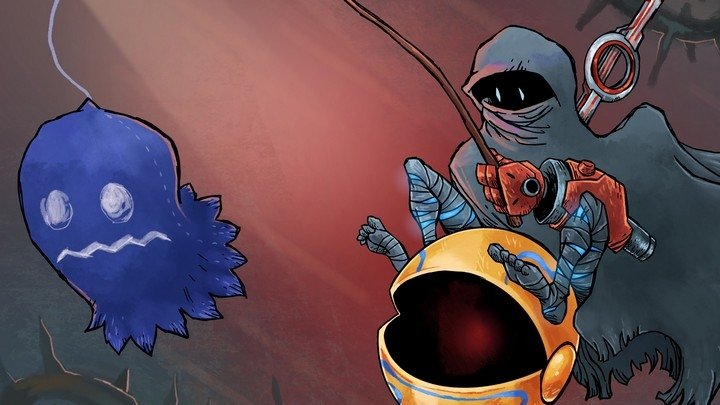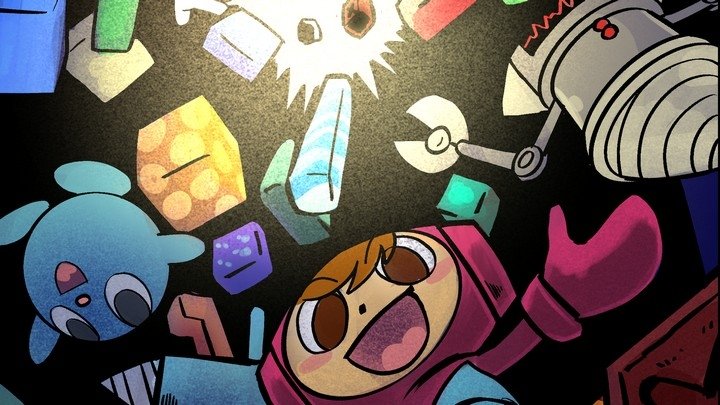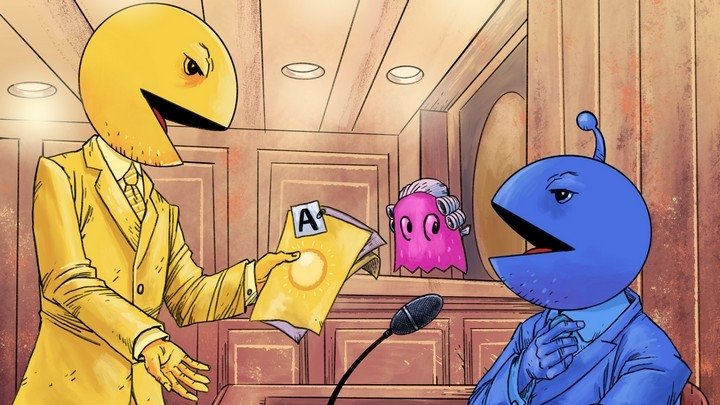The best JoJo's Bizarre Adventure game is also gaming's best manga adaptation
If only it were easier for more people to share in this Gold Experience...
Social media was set ablaze recently with the news that Part 5 of JoJo's Bizarre Adventure (a.k.a. "Golden Wind") will finally be animated later this year. Since the series is months away at this point there's no better time to discuss the fact that in 2002 (sixteen years ago!?) Capcom produced a faithful, loving adaptation of JoJo's Bizarre Adventure: Golden Wind for the PlayStation 2. It's not just the best game based on JoJo; it's the best manga-style video game I've ever seen.
Before I go on, I should offer a brief explanation of what JoJo's Bizarre Adventure even is. For starters, it's one of the most influential Japanese media properties around. JoJo's Bizarre Adventure is a serialized action-adventure tale that started in Weekly Shonen Jump back in 1987. Originally a horror/martial-arts story about two young boys whose lives are transformed thanks to an ancient stone mask that turns people into vampires, the series quickly pivoted into an ongoing generational conflict between those boys' descendants, followers, superfans, ex-lovers, and the like. Vampires and zombies gave way to "Stands," psychic projections of a character's fighting spirit that stands beside them. If you've seen out-of-context images online of muscular men posing next to angry ghosts, you've probably been looking at a JoJo.
Each "part" of JoJo's Bizarre Adventure has a new hero nicknamed JoJo, always a descendant of the original hero Jonathan Joestar. For years there was no official English release of JoJo's Bizarre Adventure in any medium. One of the earliest arrived in 1998 in the form of Capcom's 2D fighting game, titled simply JoJo's Bizarre Adventure (or "JoJo's Venture" in some markets). That first game was based largely on Part 3 of the manga, which is the one that gets the most media attention: it was the first part to be animated back in 1993 (a more recent Part 3 anime adaptation is currently airing in the United States on Toonami) and it even spawned one of the internet's earliest memes (with sound effects and voice samples taken from both Capcom's JoJo games).
One JoJo game wasn't enough for Capcom. Four years after releasing a 2D fighting game, they made a new JoJo game using a very different approach: 3D instead of 2D, single-player and story-focused instead of a fighter, and entirely cel-shaded using a special process they called Artistoon. Cel-shading was in vogue in the early 2000s (recall Jet Set Radio, The Legend of Zelda: Wind Waker, and Capcom's own Viewtiful Joe, to name a few) but the characters in JoJo's Bizarre Adventure: Golden Wind truly look ripped from a comic page, complete with brush strokes, shading lines, and bold Japanese onomatopoeia punctuating their actions and even their emotions.
JoJo's Bizarre Adventure: Golden Wind opens with a summary of the entire story so far, recapping the journey of the first four JoJos before introducing Giorno Giovanna (GioGio, get it?), an Italian teenager who seeks to infiltrate a mafia-like organized crime group called Passione. The bulk of the storytelling comes in a semi-animated comic book form: still images and word bubbles slide onto and off screen, with lots of pop-up sound effects and dramatic music. The entire game is voiced as well, and sharp-eared fans will notice the menu sounds in this game are the same as the previous JoJo game.
What makes JoJo's Bizarre Adventure: Golden Wind such a good manga adaptation is how it manages to integrate the story into the 3D action scenes. Not only are the characters talking to each other (and themselves, aloud) during the fights, there are "secret factors" that players can discover during battle, usually by recreating moments from the original manga in the game. These "secrets" aren't just easter eggs for fans, as they also raise your score and boost your characters' abilities. Each battle can be replayed later to make secret-hunting easier, and there's even "Another Story" mode where players can fight battles from another character's perspective, including battles that weren't in the original manga. It's not the dream-match free-for-all that modern JoJo games are, but it's a fun way to maximize use of all the characters.
Even before JoJo's Bizarre Adventure: Golden Wind launched in Japan, Capcom was showing an English version of the game at E3 2002 under the name GioGio's Bizarre Adventure. Previews were written, a cover image was passed around, and all signs pointed to a fall release. Then, nothing. The game ended up as a Japan-only exclusive where it sold well enough to get a Greatest Hits re-release in 2007. Capcom no longer has the rights to JoJo's Bizarre Adventure, so the prospects of a Golden Wind HD remaster are slim (a PS3/360 remaster of Capcom's first JoJo game appeared in 2012 only to be delisted two years later), but there are a lot more JoJo fans in the world now so there is a fan translation hack of the original game in the works. In the meantime, complete playthroughs of the game (in Japanese) are easy to find on YouTube and NicoNico and the cell-shaded look gives the graphics a timeless quality that few PS2 titles enjoy.
It's a shame that we keep having conversations like this when looking back at retro games but JoJo's Bizarre Adventure: Golden Wind is a tremendous video game that, by virtue of it being based on a licensed property, may never be legally available worldwide. Complicating matters further is that the English publication of the original manga has yet to reach Part 5 either. I suppose that's the JoJo experience in a nutshell: a worldwide network of fans waiting for their favorite particular incarnation to finally be released in their language in their region.
October 2018 can't come soon enough.




